Conclusion
Given the expanding scope of the lead pipe problem in this country, CDA is working with individual water utilities and municipalities, providing credible technical information on the advantages of using copper tube for water service line replacements. CDA is also providing assistance in making proper design and installation considerations to help ensure a long and successful service life.
For example, CDA has been educating members of Congress on the urgent need to address the aging water infrastructure across the country. One important facet of this education is to ensure any legislation that funds or addresses lead service line replacements requires replacement of the full lead service line—not just the utility or building owner’s portion, leaving the remainder of the lead line in the system. According to a recent study in Environmental Engineering Science, creating a ‘hybrid’ system by replacing sections with alternate materials can exacerbate lead leaching, at least in the short term, into drinking-water tubes.
Besides its superior performance and reliability, copper is easy to work with. It can be joined using multiple leak-free methods, making it the preferred material among installers. In underground water service applications, flared or mechanical compression joints are most common. However, copper can also be brazed using standard fittings. With no-lead brass valves, fittings, and components, lead-free solders, and flameless, solderless joining systems, copper piping systems can represent the best option in reliable, long-lasting, lead-free service line installations, whether new construction or replacement.
| JOINING COPPER SYSTEMS |
| Copper plumbing tube can be joined using a variety of methods and fittings to match the specific application.
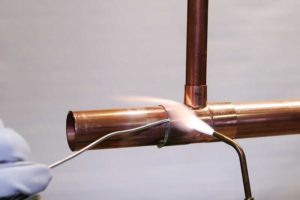 Soldered and brazed Soldered and brazed
This method requires the use of heat or flame to bring the copper tube and fittings up to the joining temperature so the filler metal can melt, flow into the capillary space between the tube and fitting, and solidify to create a strong, metallic bond. The main difference between the two methods is the filler metal used (solder or brazing filler metal) and the temperature required. Soldering takes place below 450 C (840 F); brazing occurs from 450 to 1080 C (840 to 1980 F). While extremely strong and robust, these methods are not commonly used for underground water services.
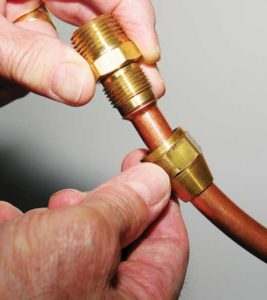 Flared joints Flared joints
A mechanical joining method that does not require the use of heat or flame, this technique creates a metal-to-metal seal between the copper tube surface and the copper fitting. To make these joints, a special flare nut is installed on the tube end, which is then mechanically flared (expanded and formed into a conical shape) using a specially designed flaring tool. The flare nut is then used to draw the flared tube end onto the outer surface of the fitting using a threaded connection between the flare nut and the flare fitting. This creates a strong, easily installed metal-to-metal connection that can be disassembled if necessary. Flared joints are the most common joining type for underground water service lines.
Pack-joint compression joints
A mechanical joining method through which a flexible gasket is compressed (i.e. packed) between the outside surface of the tube and the inner surface of the fitting, without any working of the tube end. The body of the compression fitting is clamped to the outer surface of the tube to prevent lateral movement. The gasket is then compressed between the tube and body of the mating fitting to create a leak-tight seal between the gasket and tube and fitting surfaces. This type of joint is only commonly used in underground water services.
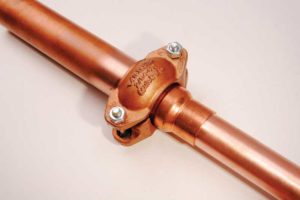 Roll-grooved joints Roll-grooved joints
In this mechanical joining method, a groove is rolled into the end of the tube, which is then joined to a matched grooved fitting and connected using a gasket and clamp on the exterior of the assembly. Generally, it is only available for copper systems over 50 mm (2 in.) in diameter; it is not commonly used in underground construction.
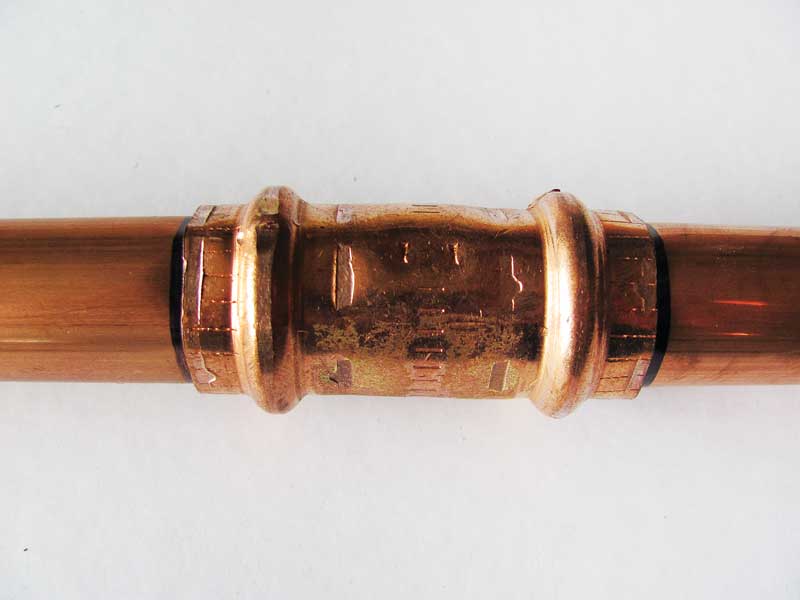 Press-connect joints Press-connect joints
For this mechanical joining method, a special fitting, containing an O-ring or gasket integral to the fitting, is mechanically pressed or crimped to the exterior tube surface using specially designed powered crimping tools. This results in deformation of both the tube end and the fitting, which creates a strong metal-to-metal joint, with a gasket to provide leak-free service. This joint is not commonly used for underground construction.
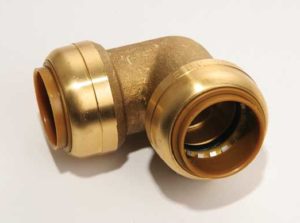 Push-connect joints Push-connect joints
In this mechanical joining method, a special fitting, containing an O-ring or gasket and a metal grip ring integral to the fitting, is pushed onto the tube end by hand. No deformation of the tube or fitting is created—the grip ring prevents the tube from pulling out of the fitting and the gasket provides leak-free service. This joint is not commonly used for underground construction.
|
Andrew G. Kireta Jr. is the vice president of the Copper Development Association (CDA) and is responsible for the use of copper and copper alloy systems and products in building construction applications, including plumbing, mechanical, and architectural systems. Since 1992, Kireta has been active in product development, specification, application, code, and standards acceptance, along with market promotion and education on use of copper in building construction. He can be contacted by e-mail at andrew.kiretajr@copperalliance.us.









